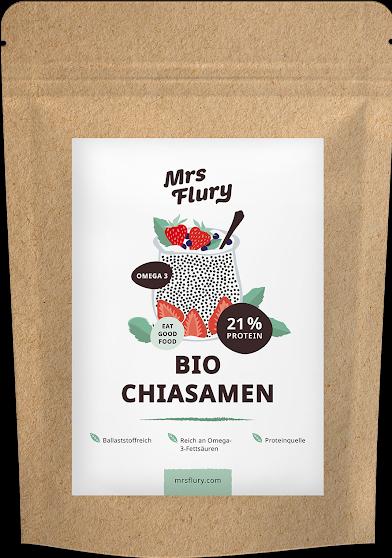

Had enough of energy gels? Here are five alternatives
Energy gels are really handy for races and long runs, but sometimes you just get fed up with the sticky mess. Here are five alternatives.
Carbohydrates are extremely important in sports. They increase performance and accelerate recovery. The longer your training session or race, the more important this nutrient becomes. Many joke that ultrarunning’s essentially an eating contest combined with a run – that’s how crucial energy intake is during long or intense endurance sessions.
Which carbohydrates you need when exercising
But it’s not just extreme athletes who benefit from the energy boost. If you’re training for more than an hour, it’s a good idea up your carbohydrate intake during your workout. The Sports Nutrition Working Group of the German Nutrition Society (DGE) recommends 30 to 60 grammes of carbohydrates per hour for training sessions lasting one to 2.5 hours. These should be in the form of monosaccharides – simple sugars such as fructose and glucose. They’re beneficial, as they’re absorbed quickly and are available as a fast energy fix.
Energy gels are many athletes’ fuel of choice. They’re easy to carry and store and packaged in portions.
However, you might start to find the consistency and taste of the sweet little packets unpleasant in the long run. I certainly sometimes find it difficult to swallow the sticky mess. Plus, the packaging creates a relatively large amount of waste. That’s why I always go for alternatives, especially during training. Here are my favourites.
1. Energy balls and gummies for concentrated energy
Instead of a squidgy gel, I prefer energy balls—especially during slower workouts where I have enough air and time to chew. Manufacturers such as Sponsor make energy balls from natural ingredients including dates and oats.
To add variety to my snacks, I also occasionally eat energy gummies. Especially when I’m on the go for several hours, I like the caffeine ones for an extra boost.
If I suddenly feel like going for a longer run, I throw a handful of gummy bears in my pocket for a jolt of energy. I almost always have them at home, and they put me in a good mood.


Sponser Power Gums
Fruit, 1 pcs., 75 g

Haribo Goldbären
1 pcs., 175 g
Of course, you can also make your own energy balls. I mix dates, agave syrup, oats, and cashews until they reach the right consistency to form small balls. Then I roll them in cocoa powder to stop them sticking together. Then I put them in a small freezer bag.

Nectaflor Organic dates 200g
200 g

Alnatura Oat flakes fine leaf
500 g

Allos Agave syrup dispenser bottle organic
375 g
2. Liquid energy
For a long time, the advice in endurance sports was «eat your carbs and drink your electrolytes.» Not anymore. You can certainly get some of the energy you need through a drink. However, make sure the drink isn’t too sweet – especially in high temperatures – otherwise you might stop wanting to drink altogether. You should avoid this, because dehydration sabotages your run even more than a lack of carbohydrates.
Mass-produced zero-calorie drinks aren’t suitable for endurance sports either. They often contain artificial sweeteners, which can put strain on your stomach and intestines and don’t provide the energy boost you need.
Here are my favourite electrolyte and energy blends:


Tactical Foodpack Energy Drink
Wild cherry, 1 x

3. Homemade energy gels
Don’t worry if you like energy gels but aren’t keen on the taste, consistency, or packaging. You can easily make them yourself.
You’ll need dates or bananas, strawberries or blueberries, chia seeds, lemon juice, salt, and water as a base. Combine everything in a blender until the gel reaches the right consistency. Make sure there aren’t any lumps that could block the opening. Add water as needed to make the gel runnier. You can vary the ingredients to your liking. I then pour the gel into a flask so I have it to hand and avoid sticky fingers.
4. Fruit puree and baby food
Baby food and fruit puree don’t provide enough energy during long training sessions or races. However, if you want to replenish your energy stores every now and then, they can be a welcome alternative to sugary foods. I’ve only tried fruit purees so far, but I’m curious to see how I feel about sweet potato and parsnip purees.
5. Varied energy sources
Not trying anything new in races is a golden rule. But you can experiment in training. For example, I’ve noticed that mini Snickers work really well during long, intense sessions. Lightly salted mashed potatoes work really well too – I put them in a small freezer bag. Especially when I want a break from sweet snacks. And as I lived in the US for around 15 years, I can also appreciate this classic: the PBJ sandwich. Cut into chunks, the mixture of soft white bread, lightly salted peanut butter, and jam gives me the right kick.

Knorr Stocki mashed potatoes with milk and Swiss potatoes
86 g


Eric'S Swiss 100% peanut butter
270 g
What are your favourite gel alternatives? Let me know in the comments.
Research diver, outdoor guide and SUP instructor – I love being in, on and around water. Lakes, rivers and the ocean are my playgrounds. For a change of perspective, I look at the world from above while trail running or flying drones.








